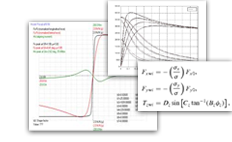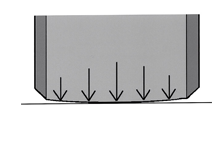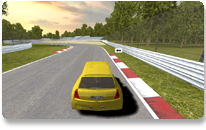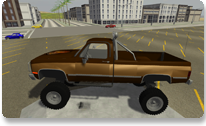UnityCar - cars with physics for Unity3D

The Unity3D game engine needs no special introduction. For those who do not know what it is, they can look at unity3d.com/unity/ or look for other topics on the hub about this wonderful cross-platform engine. Many add-ons, models and other packages have already been written for him. One of them will be discussed.
UnityCar is a full-fledged physically realistic car simulation package for Unity3D that is easy to use and implements many physical models, including damage and destruction models.
A short video demonstrating the capabilities of the package:
Creating games is a complex process. There are many solutions that are designed to facilitate this process. Some engines specialize only in graphics and control (e.g. XNA), others on physical calculations (e.g. NVidia PhysX), others on something else. But Unity3D allows you to combine the various parts of the game and graphics logic together (as the name “hints at”). PhysX allows you to do basic physical calculations, so you need a deep understanding of the processes of mechanics, aerodynamics, hydrodynamics to create physically realistic games. But such an applied thing as vehicle physics can be implemented as a finite number of code that requires a minimum of skills on the part of you (the game developer). UnityCar just implements the corresponding physics in the framework of projects on Unity3D.
UnityCar Features
Despite the ease of installation (in two clicks) and use, this engine does not suffer in functional terms, and you can highlight its main features.Realistic tire model
In the theoretical part, it is mainly based on the formulas of Hans B. Pacejka (expert in the field of vehicle physics and wheel systems). The equations of longitudinal and lateral relaxation and (optionally) the equations of elastic deformation are also used.

In this case, a search is made for all points of contact between the tire and the road surface, and not just one (as is the case with the Wheel Collider), but this can be disabled when using the arcade mode (that is, with simplified physics and less use of resources).
Realistic suspension, transmission model
The behavior of springs, shock absorbers (both in compression and in tension) and the anti-roll bar are modeled.Realized full-fledged models of clutch, differential, gears and gears.
Destruction and damage
Possible deformation of the vehicle body, failure of its individual parts. Also, cars can be repaired. In future versions, it is planned to expand the model of destruction, including the addition of ignitions and explosions of machines.External elements
Built-in functionality of brake lights, dashboard. The dashboard can be configured arbitrarily, a speedometer, rev counter, tachometer, ABS, transmission, etc. can be displayed.Sound accompaniment
The sound part of the engine reproduces all kinds of noises, such as engine noise, suspension, transmission, tires, damage, drifts, friction, driving on sand, grass, off-road. The sound also depends on the model of car.Driving simplification
Non-blocking brakes, stabilization system, traction control, training mode. Arcade mode, it greatly simplifies the physical model, control becomes simpler, but realism is reduced. In a sense, this mode is similar to driving in GTA4.Demonstrations
In order not to take a cat in a poke, you can try several demos where various features of the engine are implemented. These examples do not claim to be realistic photos, but allow you to try out the capabilities of UnityCar directly in the browser (in Unity Web Player).



Using engine
UnityCar can be used wherever Unity3D works. The engine itself is written in C # and comes complete with source code. The engine also works on mobile platforms (iOS and Android) and does the job at an acceptable speed. UnityCar is compatible with analogue control devices (steering wheel, pedals).
You can configure many parameters, and in the absence of the desired settings, you can make changes to the source code. There is wiki documentation and feedback. Special attention is paid to engine performance, especially on mobile devices.
Terms of purchase
UnityCar product is paid. The cost for direct payments through PayPal is 97 euros, and through the Unity Asset Store 143 euros. Within 30 days after payment, the possibility of a refund is guaranteed .
After payment you will receive:
- UnityCar engine itself
- C # source code
- Free updates
- Feedback (also in Russian through the forum )
- 9 finished cars
You have the right to use the purchased product for almost any purpose, naturally, without the right to resell the original product and without the right to publish the original / modified UnityCar code .
Enjoy the creation of games!
